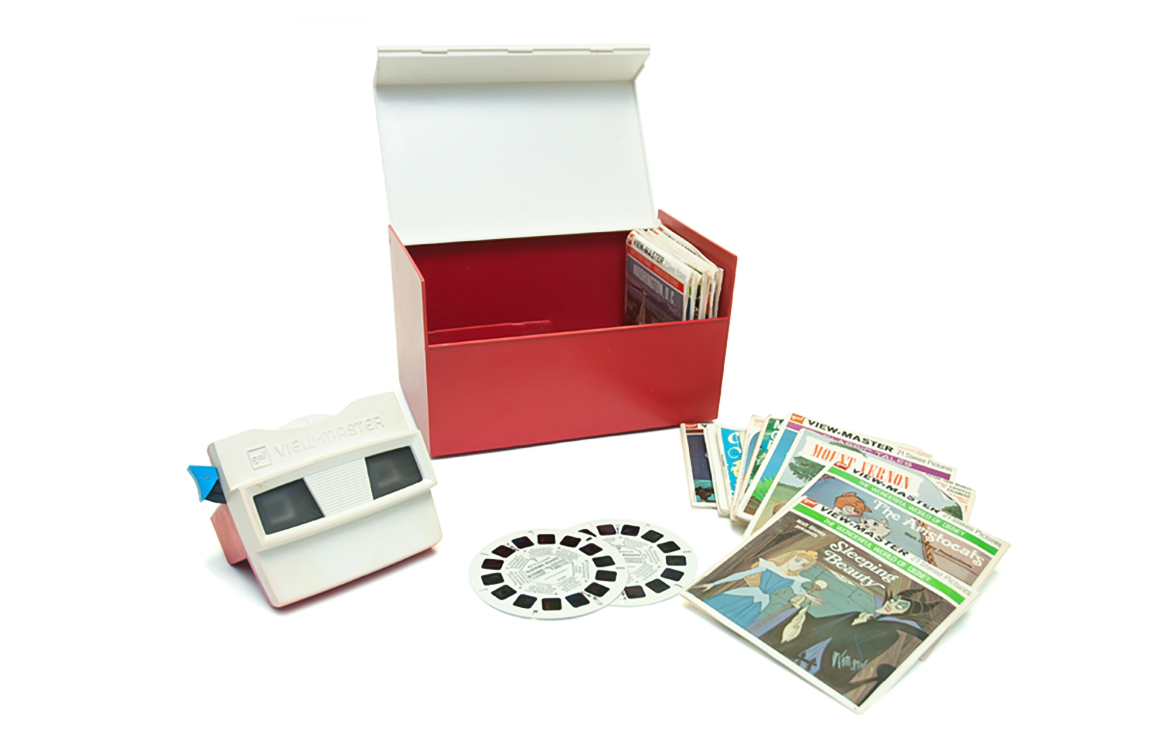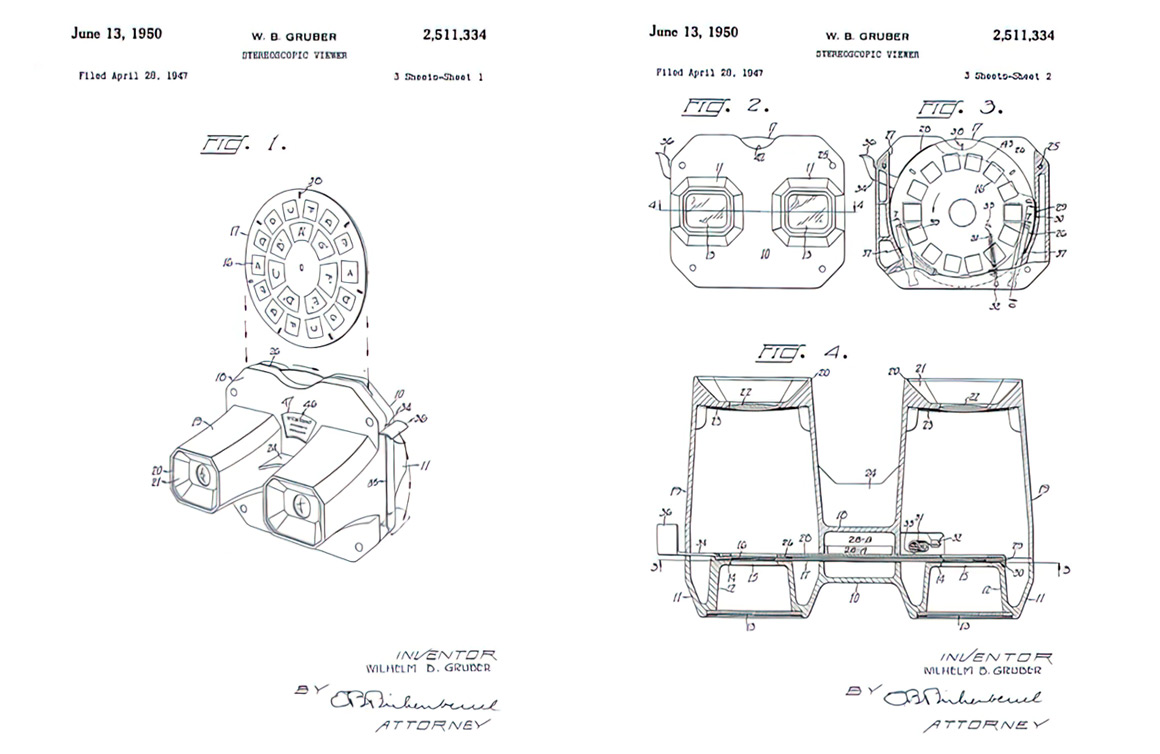Recently at the 2015 New York Toy Fair, Mattel announced that it’s teaming up with Google to reboot the View-Master, the iconic 3D stereoscopic picture viewer that was inducted into the National Toy Hall of Fame in 1999. When coupled with a supported smartphone and app, the updated model acts as a mini virtual reality (VR) viewer. In many ways, the transition to VR feels like a natural evolution for a toy that has fostered exploration, entertainment and discovery for 75+ years.
William Gruber and Harold Graves conceived the View-Master after a chance meeting while both men were visiting the Oregon Caves National Park. Graves, the president of Sawyer’s Inc., a company specializing in picture postcards, spied Gruber, an avid photographer, taking photos in the park. Instead of a standard camera, Gruber was snapping pictures via a self-made rig consisting of two cameras strapped together. A brief discussion between the two ensued.
Graves was intrigued by Gruber’s idea to produce a low-cost, portable stereoscope, and the duo agreed to form a partnership to refine and market the product. Less than a year later, the Sawyer View-Master made its debut at the 1939-1940 New York World’s Fair, where it was sold as a souvenir of the event.
SPECIALITY SHOPS & WORLD WAR II
Buoyed by their sales success, Gruber and Graves began to market the View-Master through specialty photography and stationery stores in the United States. According to published reports, by 1941, more than 100,000 stores offered View-Masters. As newspaper ads from the time depict, the View-Master was originally billed as an educational tool aimed primarily at adults. Early reels for the device underscored this fact, as the scenes focused primarily on national monuments and other travel destinations.
As part of its World War II war effort, in 1942 the U.S. Government commissioned a large quantity of “self-study” View-Master reels for distribution to servicemen. These were used mainly for the identification of planes and ships within targeting distance.
INSIDE THE PATENT
United States Patent #2,511,334, filed April 28, 1947 by William Gruber, illustrates the familiar design of the toy. Seven stereo views were provided in colour on each paper reel, using Kodak’s new (at the time) Kodachrome colour film.
CHILDREN’S ENTERTAINMENT
The tipping point for the View-Master occurred in 1951, when Sawyer acquired one of its competitors, the Tru-Vue Company. A key motivation for the purchase was gaining licensed access to all of Walt Disney’s characters and films. The ability to create reels using animation cells from Disney movies provided the View-Master with instant appeal to a whole new demographic – children.
With the floodgates now open, Sawyer began offering slide reels and three-reel packets complete with storybooks of many major films and children’s television shows. Along the way, General Aniline & Film Corporation (GAF), a company focused on cameras and the processing of film, acquired Sawyer. This acquisition was the beginning of a series of mergers and acquisitions of the View-Master brand until it eventually landed in the hands of Mattel.
While the popularity of the toy has had its fair share of peaks and valleys, it is estimated that overall sales have topped 100 million viewers and 1.5 billion reels.
Note: If you buy something using the eBay link in this story, we may earn a small commission. Thank you for supporting independent toy journalism!


